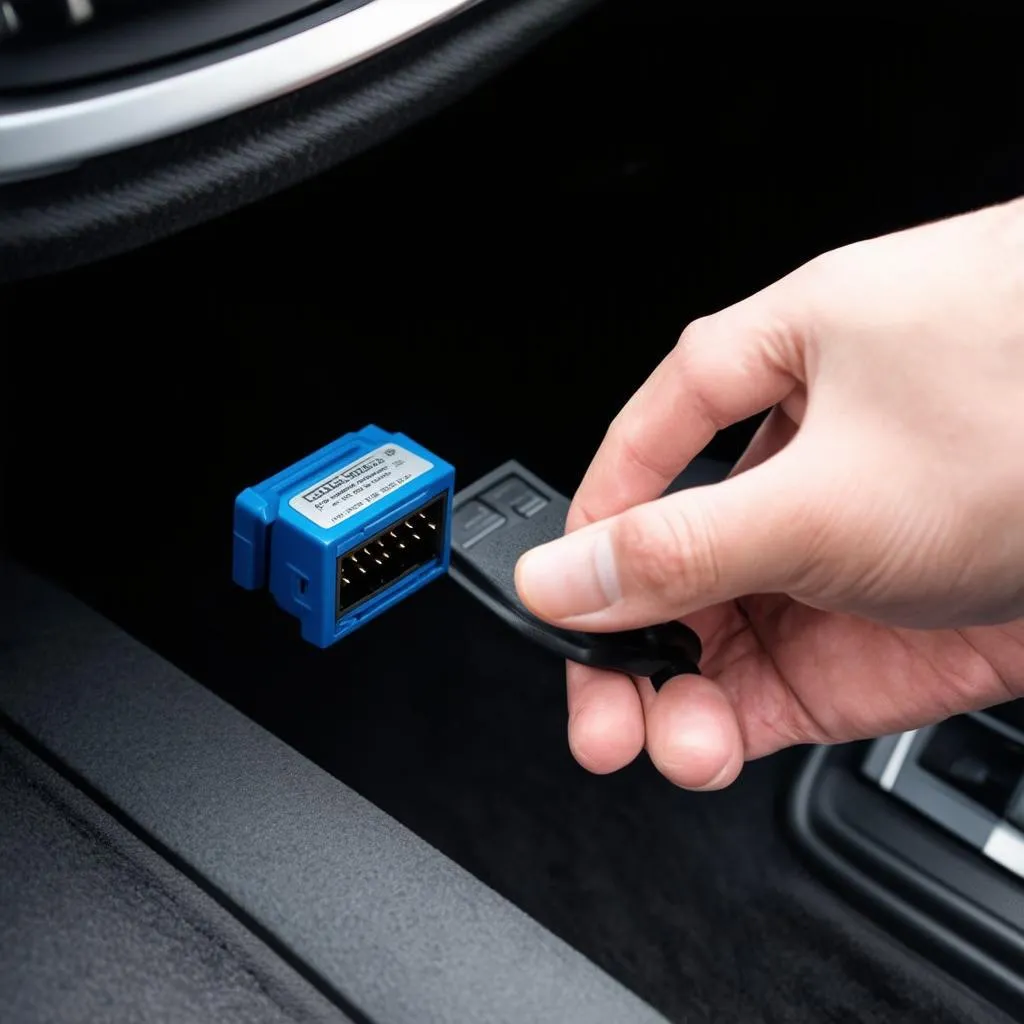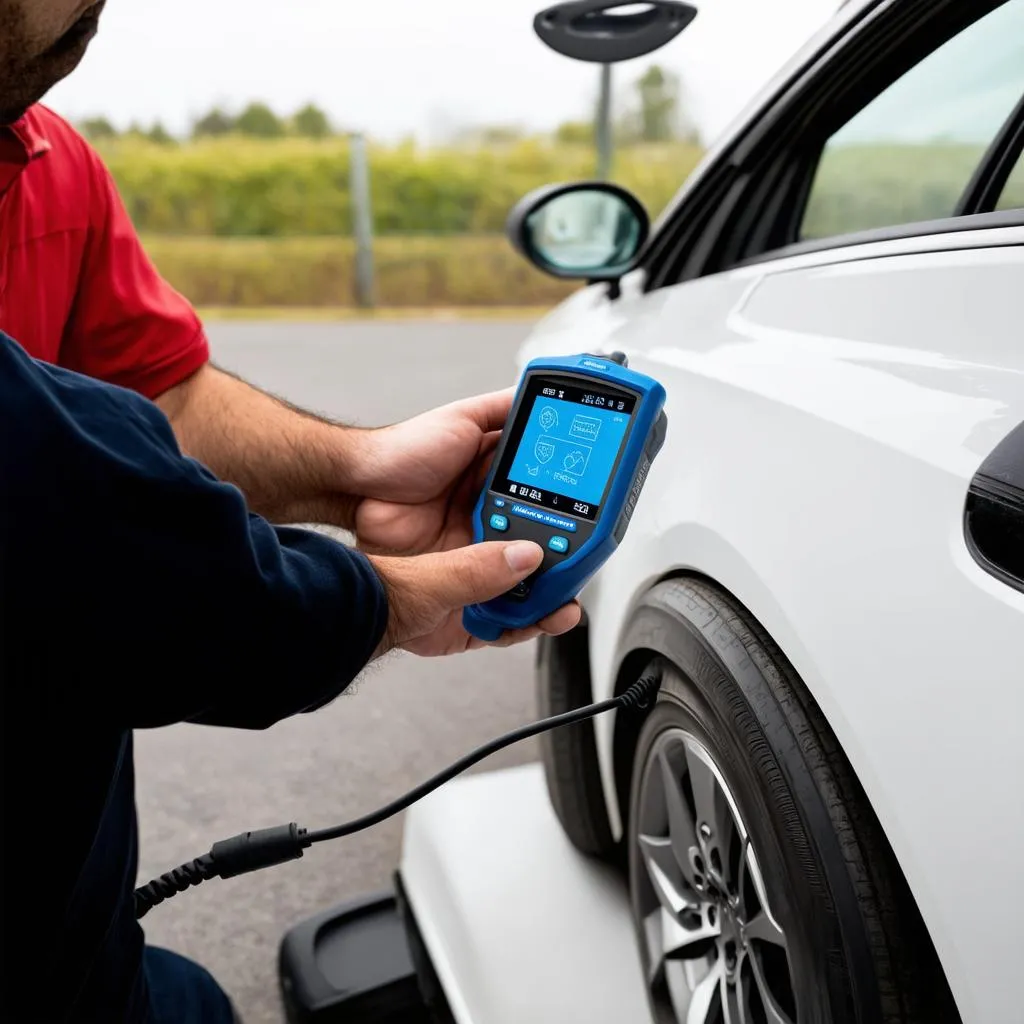Ever wondered what that mysterious, trapezoidal port hiding under your car’s dashboard is? You might have even plugged something into it without knowing its true potential. That, my friend, is the OBD port, or On-Board Diagnostics port, and it’s like a direct line of communication to your car’s soul (or at least its engine).
Decoding the Enigma: What Does OBD Port Mean?
Imagine your car wants to tell you something’s wrong. It can’t exactly send a text message, right? That’s where the OBD port comes in. It’s a standardized 16-pin connector found in most vehicles manufactured after 1996. Think of it as a universal language all cars speak, allowing mechanics and even DIY enthusiasts to access a treasure trove of information about the vehicle’s health.
Unlocking Your Car’s Secrets: Uses of the OBD Port
1. Diagnosing Engine Troubles:
Remember that time your ‘Check Engine’ light decided to throw a party on your dashboard? The OBD port is how mechanics decipher those cryptic warnings. By connecting a scan tool, they can read diagnostic trouble codes (DTCs) stored in the car’s computer, pinpointing the source of the issue.
2. Monitoring Performance:
Beyond just problems, the OBD port provides a live feed of your car’s performance. Want to know your fuel economy on that last road trip? Curious about your engine’s temperature or how your transmission is behaving? The OBD port spills the beans on all this and more.
3. Customization and Beyond:
Some intrepid souls delve even deeper, using the OBD port to customize their car’s performance. From adjusting shift points to tweaking engine parameters, the OBD port unlocks a realm of possibilities for those who dare to tinker.
 OBD Port Location
OBD Port Location
Myths and Misconceptions
There’s a lot of misinformation floating around about OBD ports. Some believe plugging anything into it will fry their car’s computer (not true!). Others think it’s only useful for professional mechanics (also false!). The truth is, with a little knowledge and the right tools, anyone can tap into the power of the OBD port.
OBD: A Brief History
Like all good inventions, the OBD port wasn’t born overnight. It evolved over time, with early versions offering limited diagnostic capabilities. “In the 1980s, car manufacturers started using electronic systems to manage engine functions,” says Johnathan Miller, author of “The Car Whisperer’s Guide to OBD.” “The OBD port emerged as a way to access these systems for troubleshooting.” Today’s OBD-II standard, implemented in 1996, provided a unified system, revolutionizing car diagnostics and empowering car owners like never before.
The OBD Port: Your Co-Pilot in Car Care
Understanding your car’s OBD port is like having a secret weapon in your automotive arsenal. It demystifies those dreaded warning lights, helps you stay on top of maintenance, and even opens doors to performance enhancements.
Here are some frequently asked questions about OBD ports:
-
Where is the OBD port located in my car? The OBD port’s location can vary between makes and models, but it’s typically found under the driver’s side dashboard. You can often find its exact location in your car’s manual.
-
Can I use any OBD scanner with my car? While many scanners are compatible with a wide range of vehicles, it’s crucial to choose one that specifically supports your car’s make, model, and year.
-
Can I damage my car by using an OBD scanner? Using a reputable OBD scanner correctly poses minimal risk to your vehicle. However, it’s essential to avoid forcing connections or tampering with the port itself.
-
What are some common OBD-II trouble codes? Some commonly encountered codes include P0420 (catalytic converter efficiency below threshold), P0300 (random/multiple cylinder misfire detected), and P0171 (system too lean (bank 1)).
Related Resources:
- 2020 Hyundai Elantra OBD Port Location
- 2012 Mercedes S550 OBD Location
- Z3 OBD Port
Need Help? We’re Just a Message Away!
Feeling overwhelmed or unsure where to start? Don’t worry, we’re here to help! Contact us on WhatsApp at +84767531508 for expert assistance with diagnostic tools and car repair. Our team is available 24/7 to answer your questions and guide you through the world of OBD.
 Using an OBD Scanner
Using an OBD Scanner
Remember, knowledge is power, especially when it comes to your car. Embrace the OBD port, and unlock a deeper understanding of your vehicle’s inner workings. Happy driving!